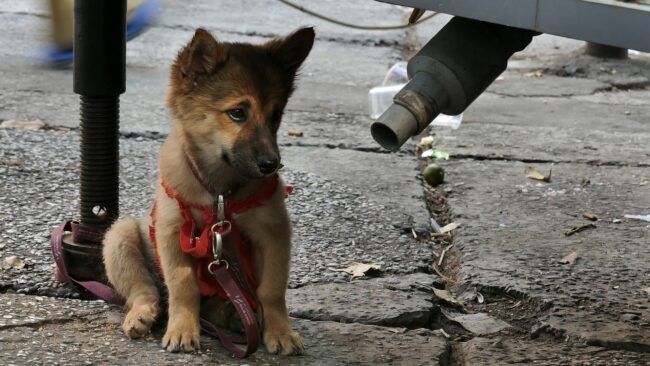Table of Contents
Weak pasterns in dogs are a lot like bad knees in a human. It can cause your dog to stand up or walk weirdly, be unable to run or jump, or even limp. So as a responsible owner you must identify your dog’s problems as they can affect its health in the long run.
What Are Pasterns In Dogs?
Pastern is the space between the paw and the lower end of the radius bone closest to the paw. It is best explained when compared to a human hand!
Think about the human hand as the paw and the pastern as the forearm leading up to the human elbow.
Common Dog Pastern Problems
The weak pastern is a common problem referred to scientifically as Carpal Subluxation. Although there is a slight debate that these two might be different conditions, it requires the same utmost attention and action.
A healthy dog should stand up straight on its front legs, bending the pasterns under the weight just enough to give them the mobility the dog needs to walk, run or jump at will.
Weak patterns will cause the dog to lay the pasterns on the ground like a human lays his forearms on a table. Except the dog will not do it willingly! There are two reasons for weak pasterns.
- Genetic (inherited from ancestors with the same problem), in which case it will show gradually.
- Traumatic (caused by injury from a fall or something else), in this case, it will show suddenly.
It is usually caused by unproportionate growth of the bones, the tendons, and the ligaments in the case of genetic inheritance.
In case of trauma, it can be caused by a fall or a jump from a high place. In that case, one foreleg can be more damaged than the other. Which requires immediate medical attention.
Immune-related diseases of the joint can also cause weak patterns. Or perhaps it is a physical deformity, in which case it should be given importance like all other physical deformities!
Due to the reasons stated above, a dog might get weak pasterns. It will cause pain and effort that is more than usual and tire the dog down faster while doing regular running and playing around. If your dog is facing this situation long enough without getting treated, it may cause long-term bone damage to your beloved pet!
Weak Pasterns In Dogs – Is It Serious?
As you can already guess, yes! In minor cases, no, but most of the time, yes, it is! Keep reading the article to find out in detail.
A dog with weak pasterns can’t run or jump around like a human with a knee injury cannot either. The uneven distribution of weight on the deformed forelegs only makes them further aggravated.
How To Correct Weak Pasterns?
How do you identify weak pasterns in your dog? How do you fix them?
First, you need to see if your dog’s pastern is low. If it is low enough, you should compare it to the angle of the average healthy dog’s pasterns of its breed. If it is lower than usual and keeps almost dragging while your dog walks, you can move to identify the reason. While weak pasterns caused by trauma are easily noticeable, there are other reasons why your dog could have weak pasterns.
If your dog is around four months old, it is time for it to teeth. The teething process can cause the cartilage in your pup’s body to go soft, resulting in low pasterns, which are completely natural. In this case, you should not worry. This situation should resolve itself in three to four weeks. Just provide your pup with a nutritious diet, sunlight, and exercise.
If your dog is not teething, you should check if your dog is overweight. Obesity can naturally cause low pasterns. Most of the time, low pasterns can be prevented by proper nutrition, so you can provide your dog with a large-breed food formula.
Make sure your dog is not overfeeding and that the foods do not lack of the required multi-nutrients or minerals. Find out what is best for your dog from the vet to be sure.
It was thought back in the old days by veterinarians that limiting exercise and calcium supplements could help. But studies on this subject show that extra calcium supplements & powders can cause rapid bone growth, resulting in complex conditions.
Exercise keeps your dog healthy as long as it is not overstretched. Giving your dog exercises on rock solid and slippery surfaces is unadvised until the muscles in its legs are mature. Jumping from a little too high a place is also unadvised.
Supplements For Weak Pasterns
It is thought that Calcium supplements can do your pet some good. However, according to professional’s advice, that is not the case!
Supplying your dog with vitamin C can boost its immunity and help joints and connective tissues. It will help with immune-related diseases of the joint. Vitamin D supplement is suggested under the supervision of a professional veterinarian.
Other supplements should be taken when registered by a veterinarian.
Exercises For Weak Pasterns
Over-exercise can harm dogs, and so can walking on flat surfaces that don’t offer much friction. A growing puppy walking on slippery surfaces can strain its muscles and joints. Make sure your dog gets its exercise on a surface with good friction.
Other pastern problems can be caused by rapid bone growth. Bone problems are especially common in large breed dogs, so if you have one (or more!), you should be careful.
Once you have taken all precautions, it is best to seek professional vet advice and medical help if the case is severe.


